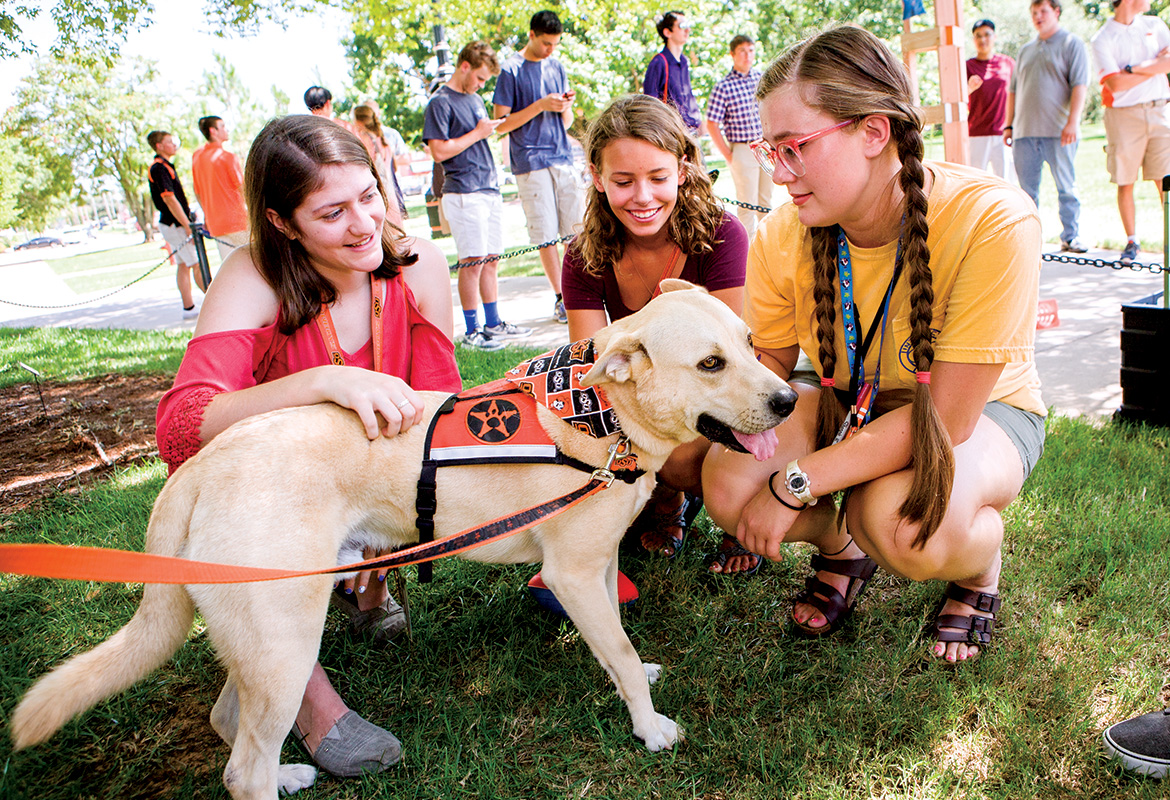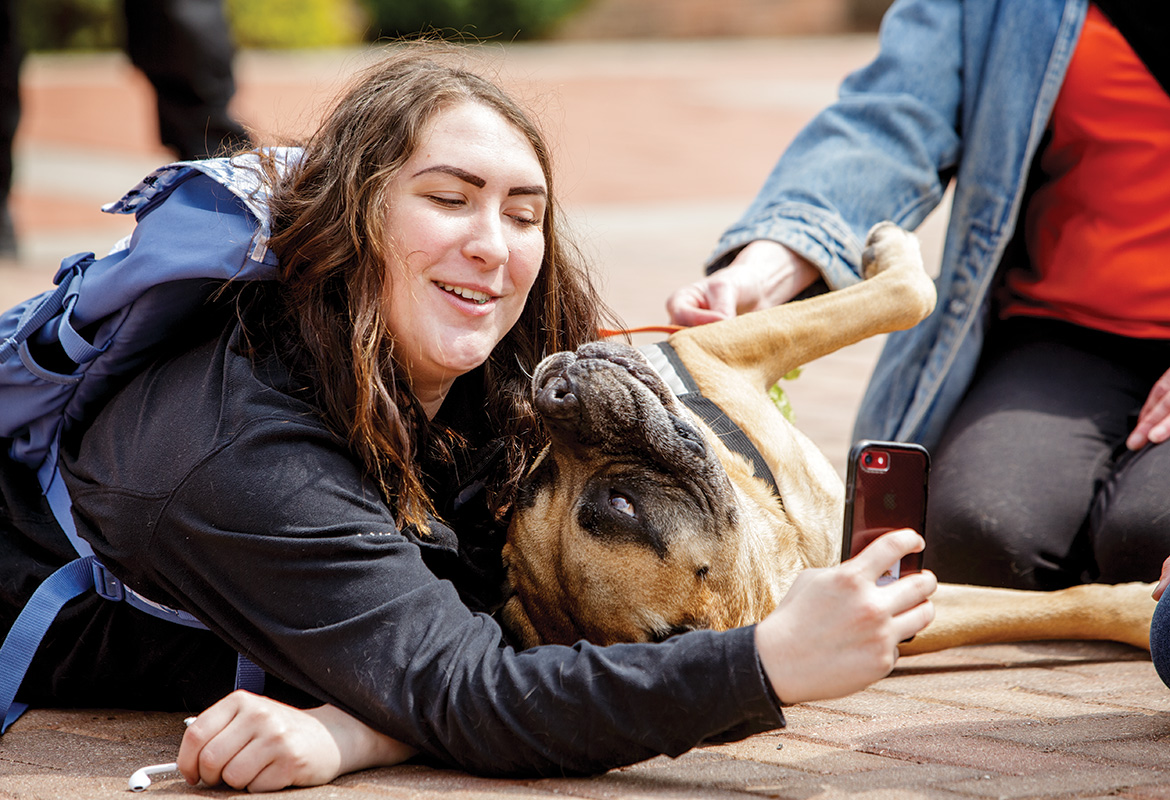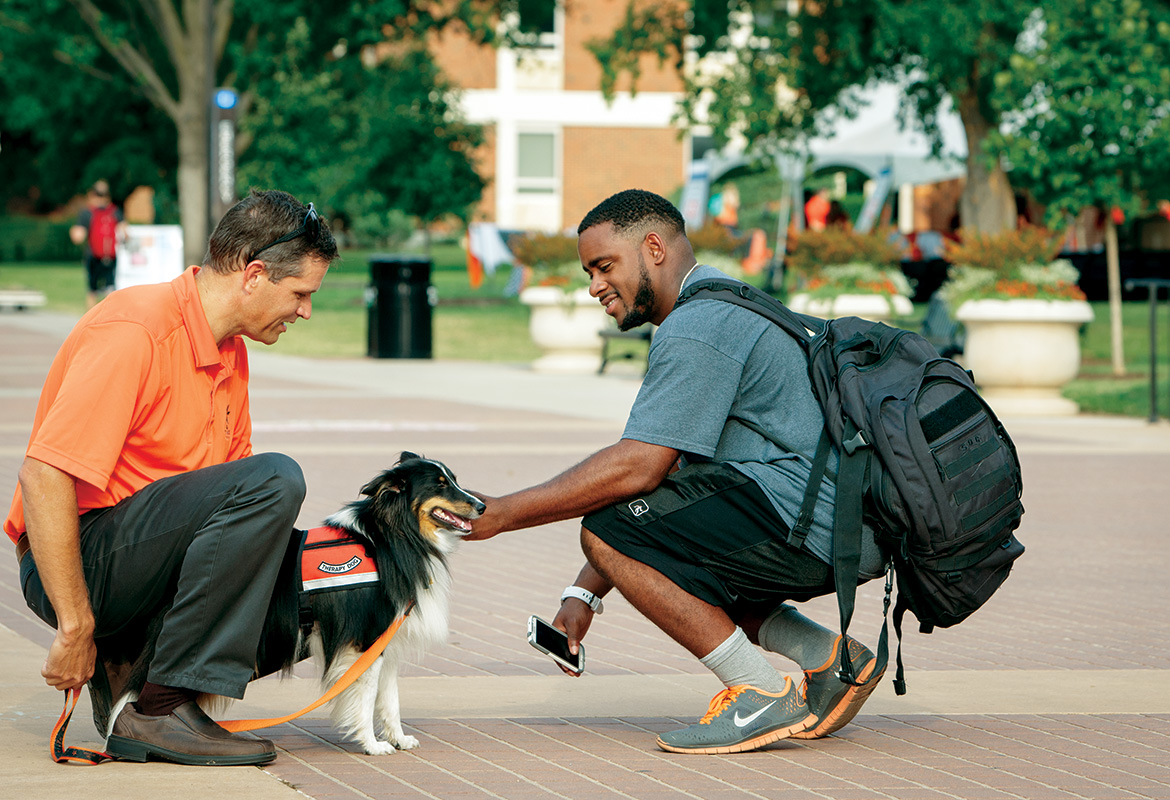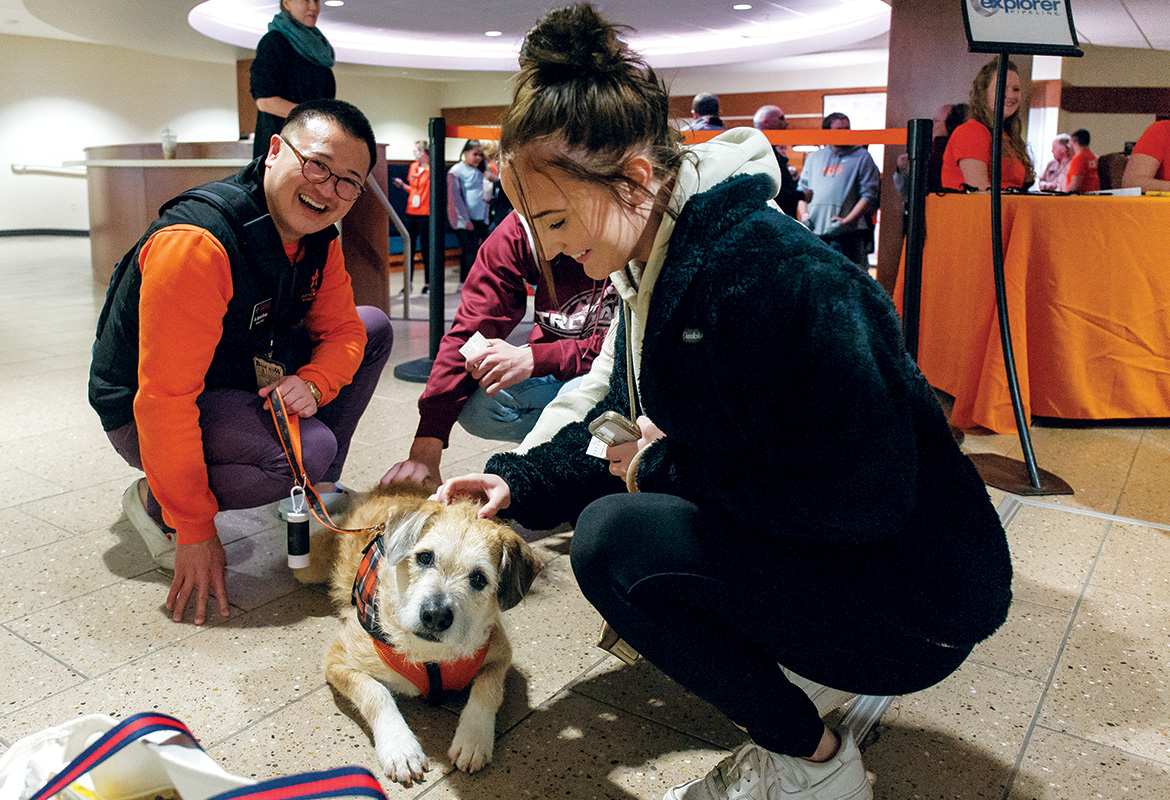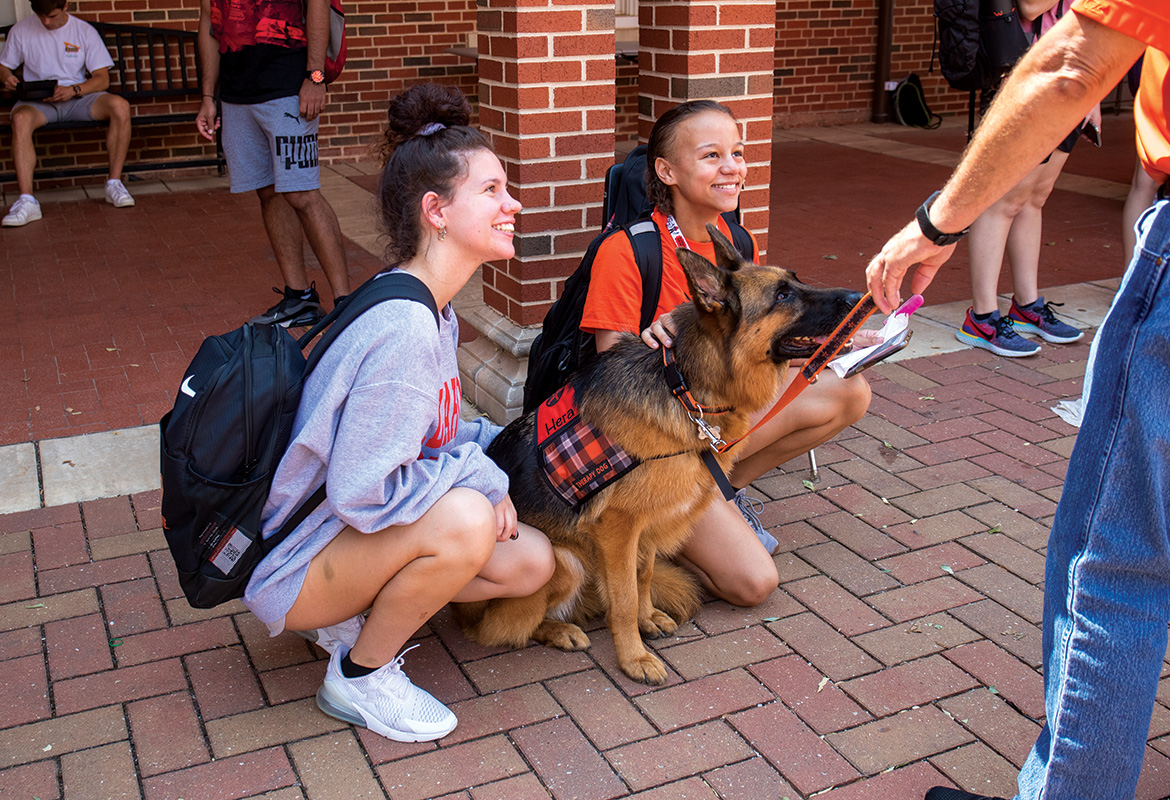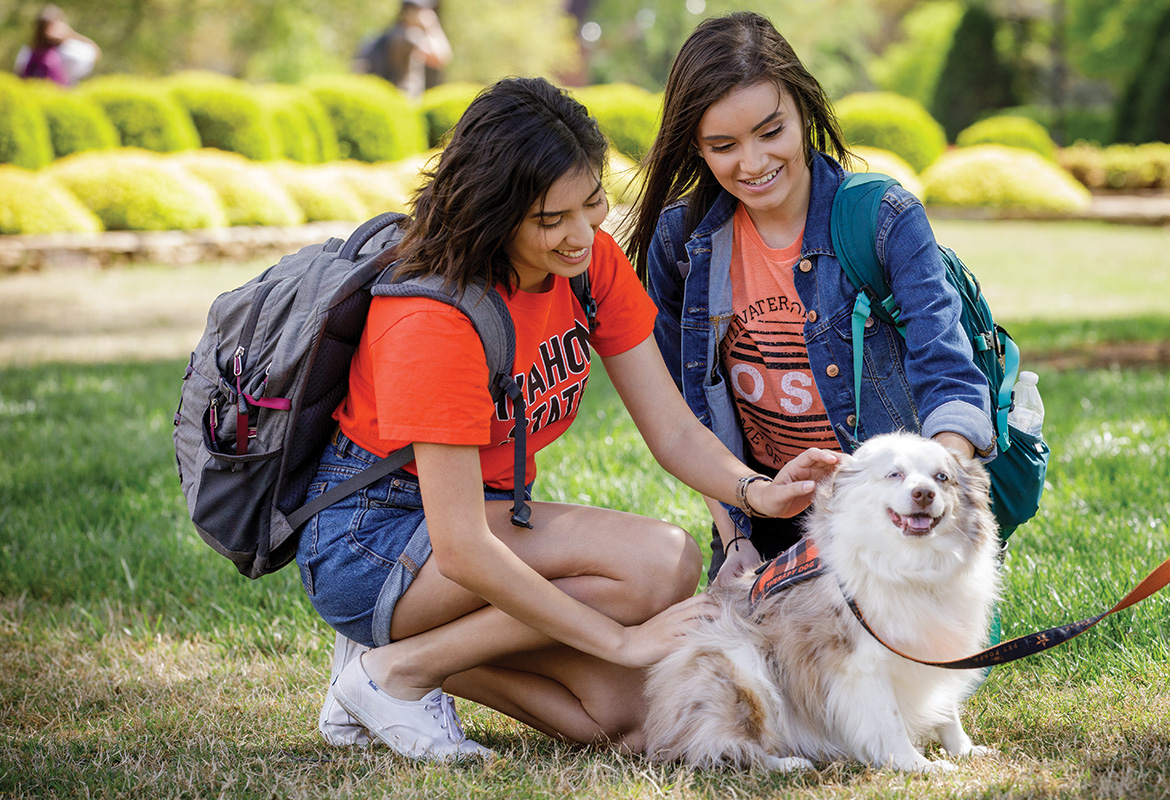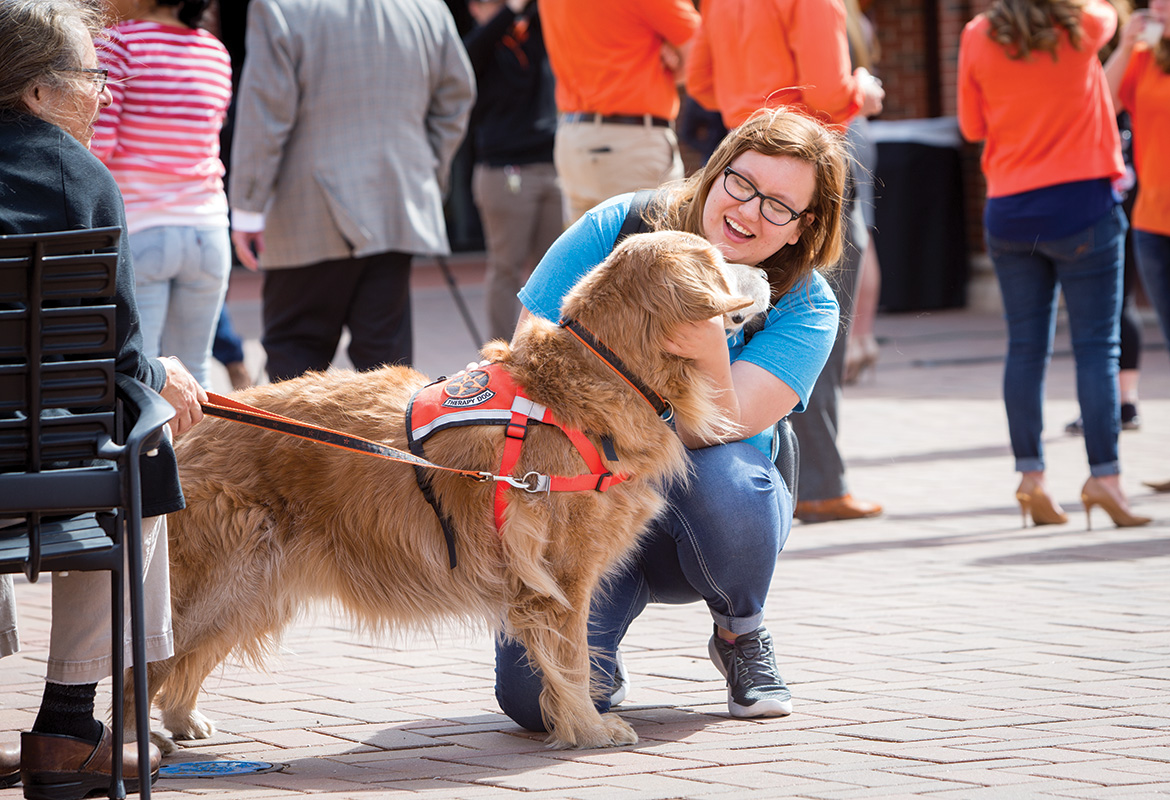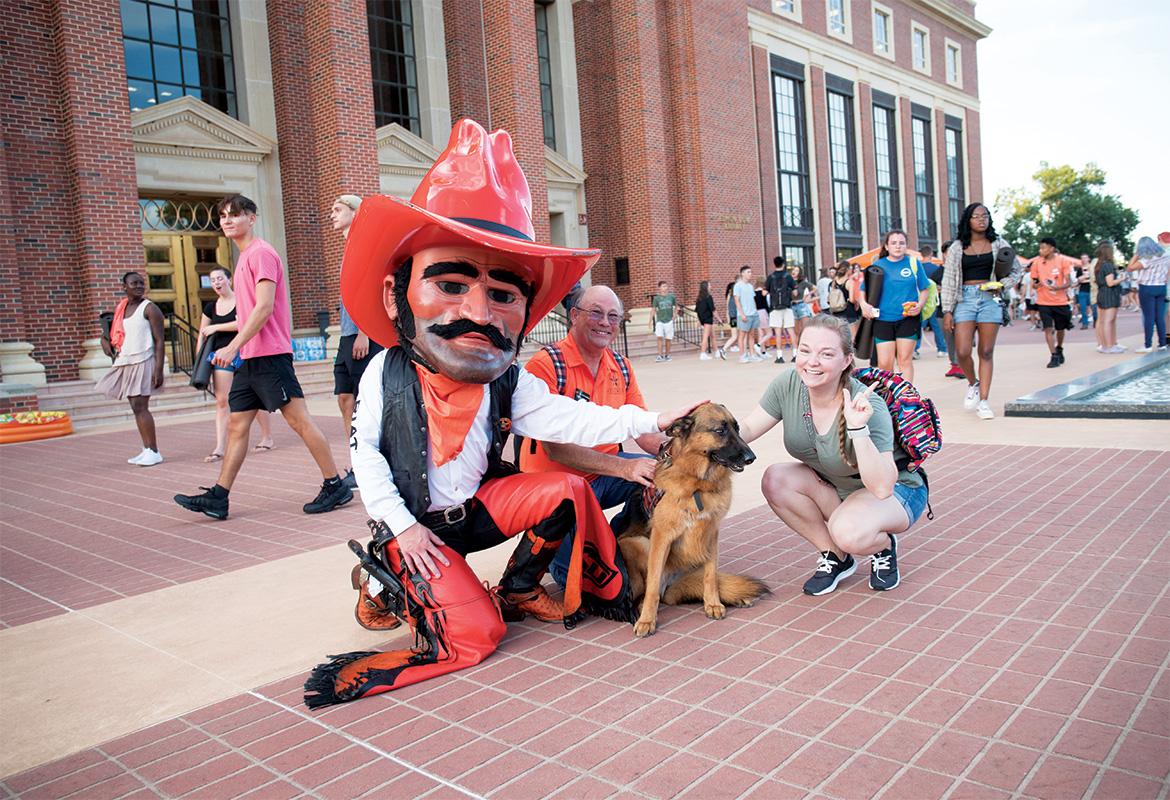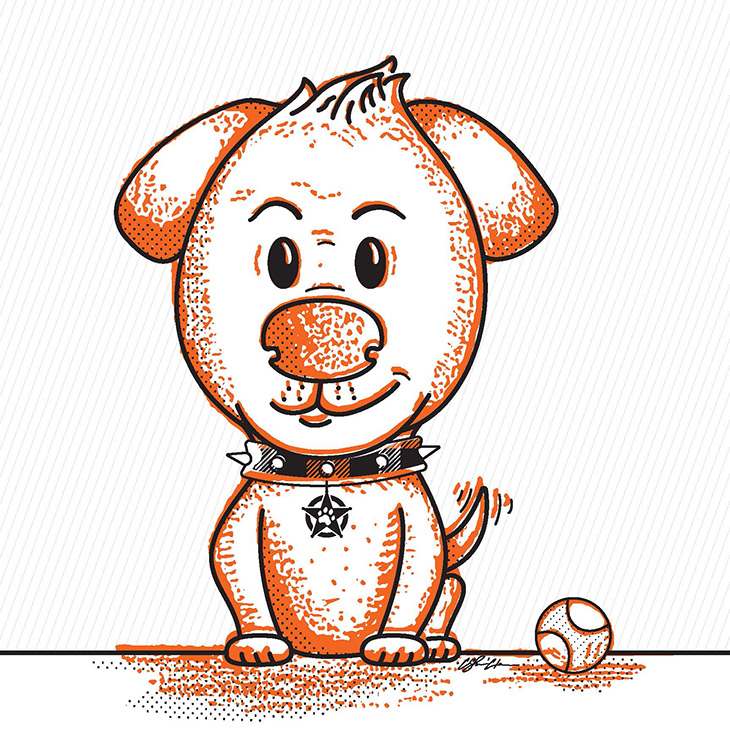
Pawsitive Impact: OSU celebrates a decade of dogs with Pete's Pet Posse
Thursday, April 27, 2023
Media Contact: Mack Burke | Associate Director of Media Relations | 405-744-5540 | editor@okstate.edu
Between the demands of school, work and keeping up with friends, it feels like the weight of the world is crashing down on you.
During a slight break in your busy schedule, you take a second to sit on the nearest bench and decompress when you’re greeted by a dog excited to spend a few minutes with you. Immediately, pressure is lifted and getting through your day seems much easier than it did before you sat down.
College marks the beginning of a new chapter in life for many students. Whether a freshman or a graduate student, unknown obstacles, stress and pressure are prevalent from week one to finals week and can often take a toll on students’ mental health.
"To me, it was like, there's a dog and the dog doesn't judge me, the dog doesn't talk back or anything."
Across the country, many universities seek to help students through challenging times by partnering with external certified therapy dog programs to bring the canines to campus a few times a semester. But at Oklahoma State University, pet therapy dogs have been a campus fixture for a decade thanks to the nation’s largest and most comprehensive collegiate pet therapy program.
As it celebrates its 10-year-anniversary, Pete’s Pet Posse is commemorating this milestone with fun events, incentives, memorabilia, plenty of opportunities to engage with pet therapy teams and more.
ROUNDING UP THE POSSE
Kendria Cost and former First Cowgirl Ann Hargis discovered a trend on social media of different universities partnering with external organizations to bring in pet therapy dogs, but only during traditionally stressful weeks.
Ann Hargis invited her friend, Judy Savage, who had Rossi the Approval Poodle visit OSU to see how the campus responded. The response from students, faculty and staff was overwhelmingly positive.
So, in 2013, they co-founded the OSU pet therapy program — Pete’s Pet Posse. For the last 10 years, Charlie, a shepherd mix; Disco, a miniature Australian Shepherd; and Scruff, a terrier mix, have suited up in their official OSU tartan working vest, Pete’s Pet Posse collar and matching leash to go to work.
For them, work isn’t a traditional 9-5 day. As part of Pete’s Pet Posse — also known as P3 — these dogs welcome scratches and hugs to help students relax during high-stress periods.
As the youngest member of the inaugural P3 class, Disco grew up greeting students, employees and visitors with her owner, Rick Eggers. At 8 months old, the blue-eyed puppy began training to earn the Canine Good Citizen and Alliance of Therapy Dogs national certification.
“She’s grown up in this program, putting that vest on to her is like, ‘I gotta go to work.’ She wants everybody to be happy,” Eggers said.
When the self-funded, volunteer-based program began, there were only eight teams that attended regularly scheduled visits across camps, which kept them busy, Eggers said.
The program expanded to OSU-Tulsa and OSU Center for Health Sciences in 2015. In 2020, the dogs and their owner/handlers began work at the OSU College of Medicine at the Cherokee Nation in Tahlequah, and there are plans to bring the program to the OSU-OKC campus this year.
A FRIEND IN ME
As homesickness set in, Ashley Walters only left her dorm room long enough to attend class and eat meals. She had just moved from Oklahoma City to Stillwater in 2014 to begin her freshman year of college.
“I was very close to transferring to OSU-OKC and moving back in with my parents because of how bad the homesickness was and how big of a change it was to be up there,” Walters said.
On a quick trip through the Student Union, Walters noticed a dog she learned was part of P3. It was Kendria Cost and her dog, Charlie — who always wears fashionable doggles.
Cost remembers Walter’s shyness and how she avoided eye contact when they first met.
As their friendship grew, Walters sought out the P3 teams more often and found comfort.
“To me, it was like, there’s a dog and the dog doesn’t judge me, the dog doesn’t talk back or anything,” Walters said. “If I need to just go give the dog attention for a few minutes and not be judged for what I’m going through or just relieve stress without having to talk to someone, it was a great outlet for that.
“Seeing other students having those same emotions and those same feelings helped me realize that I wasn’t the only one going through all of it.”
Walters began to come out of her shell as she attended more visits and enjoyed meeting students at the events. Cost eventually invited her to be part of the Ruff Riders student ambassador pilot program.
As a Ruff Rider, Walters helped handlers and dogs during visits and saw the impact the dogs were having on her fellow students. She even flew for the first time with Cost and Hargis to San Antonio to speak about P3 to other colleges and universities and the impact it had on her life.
"Afterwards I was told 'I don't know how Scruff knew but the first person he went to... was the person that needed him the most.'"
Eggers has observed that students from out of state often benefit most from interacting with the dogs, particularly those who haven’t seen their own dogs in three to four months. Many of them attend regular visits across campus.
When P3 pop-up events occur, they are pleasantly caught by surprise.
ANIMAL AMBASSADORS
When the three active original members — Charlie, Scruff and Disco — had a pop-up visit, Annabell Grinzinger received a text from her friend telling her they were in the Student Union. She immediately set off to see them.
The sophomore from Tulsa knew OSU was her home because of a P3 golden retriever she met during a campus visit when she was a senior in high school. After that visit, she told her parents she was sold on attending OSU.
“They are one of the main reasons I came to OSU,” Grinzinger said.
Grinzinger loves to visit the dogs in the library when she misses her pooch at home. She’s even built a special connection with a miniature dachshund, Charlie Brown.
Besides visiting with the P3 teams, Grinzinger collects their trading cards, which she and her roommate use to decorate their apartment walls. The cards are a hot commodity among students, with teams handing out more than 150 cards per hour at some events.
Students uncertain about approaching the dogs will still smile and wave from a distance and gladly take trading cards from handlers. When Hargis invites them to pet Scruff, who usually lays down on his back with his feet in the air surrendering to visitors, they come closer and by the end of the semester, are sitting on the ground petting each dog.
“We’ve had a lot of people do some really emotional things while petting the dogs,” Eggers said. “And there’s been times where people have walked to the counselor’s office with the handler. It’s almost like the student will open up a little bit more about what is bothering them when they’re petting a dog. They get a little bit more emotional. They get a little bit closer to the point where they want to talk and I think that that helps.”
Hargis believes Scruff has an innate ability to sense who needs him most. Besides attending regularly scheduled events, the team has also visited departments across campus that had experienced a tragedy. One grief visit they were invited to, in particular, stood out to Hargis.
“I let him take the lead and he would go to different people in the room,” she said. “Afterward, I was told ‘I don’t know how Scruff knew but the first person he went to was the very reason why I called you to come. That was the person that needed him the most.’”
CANINE COUNSELORS
OSU alumnus Kathryn Kleiner grew up without pets, not even a goldfish, but she always had a love for dogs, she said in her 2022 Chewmencement address, during the 2022 Barkalaureate.
While at OSU, she learned about P3 and interviewed to become a Ruff Rider.
“Being a Ruff Rider became more than sitting with the dogs on visits,” she said. “It was more meaningful than that.”
Kleiner saw students come to visit the dogs with long worn-out faces and leave grinning ear to ear.
“If I were to count the amount of times I have seen students having a horrible day leave in a good mood after a therapy visit, I would need more hands than there are in this room,” Kleiner said in her address. “The tears stop, the frowns dissipate and the clothes become covered in hair after each student leaves.”
Photos By: Gary Lawson, Phil Shockley and Avery Fulton
Story By: Sydney Trainor | STATE Magazine

